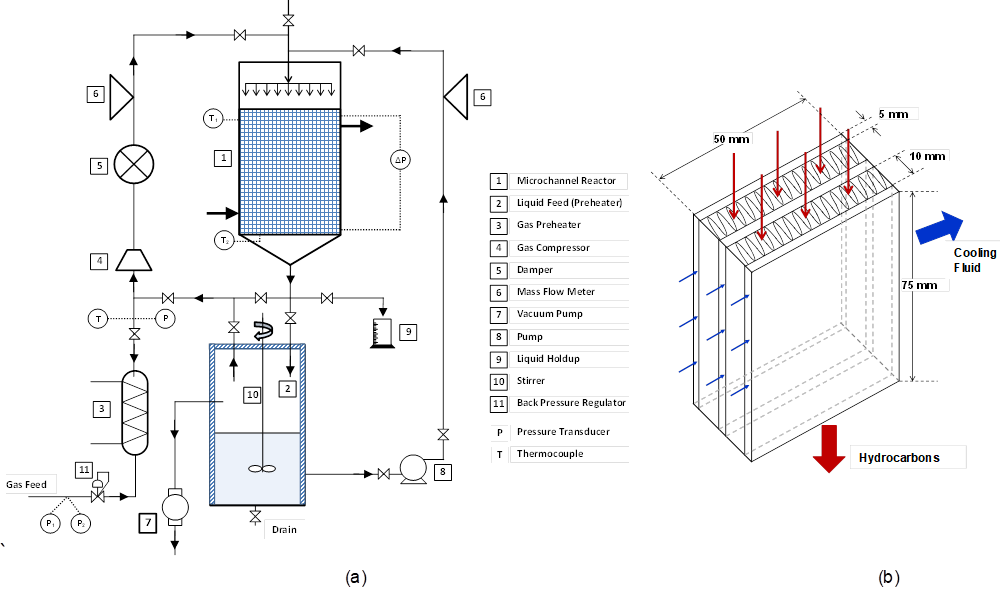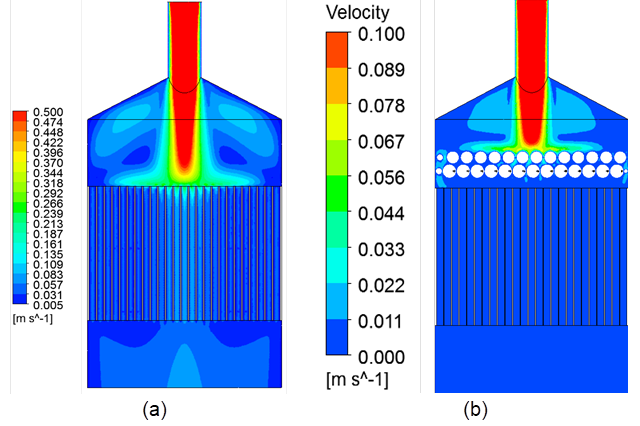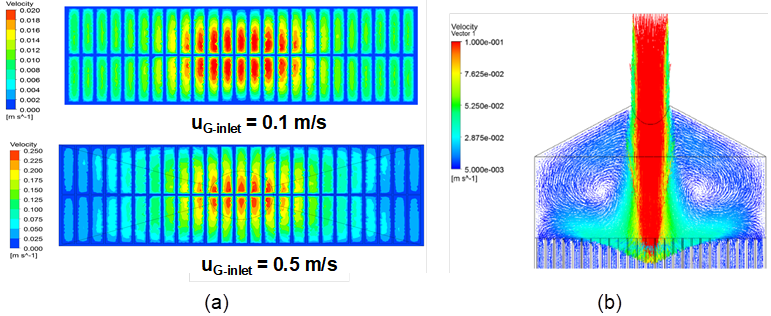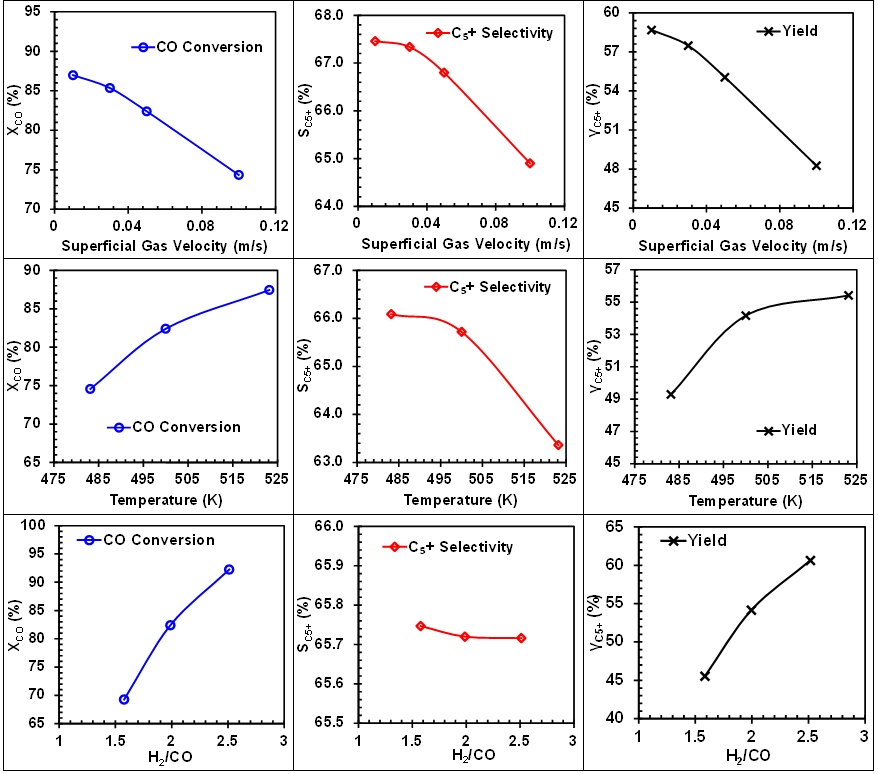Reports: ND955600-ND9: Hydrodynamics, Mass Transfer Parameters and Modeling of a Microchannel Reactor for Fischer-Tropsch Synthesis
Badie I. Morsi, ScD, University of Pittsburgh
When natural gas is produced from gas or oil fields, lacking adequate gas transportation infrastructure, huge volumes of CH4 are deliberately flared by the oil and gas companies, leading to the emission of billions of cubic feet of CO2 into the atmosphere. Improper flaring of natural gas also leads to CH4 and CO2 emissions, which are greenhouse gases with detrimental consequences to humans and the environment.
The overall goal of this project is to eliminate CH4 flaring through process intensification and modular technologies by ultimately designing small-footprint microchannel reactors(MCR) for natural gas conversion into high-value chemicals through Fischer-Tropsch (F-T) synthesis. If successful, mobile MCRs could be built and used at onshore/offshore drilling sites to eliminate gas flaring, produce clean transportation fuels and save the exorbitant gas transportation costs, which could be five times as those of liquids transportation.
Even though MCRs were proposed for commercial implementations and one demonstration plant has been recently built, adequate literature on the use of MCRs in F-T synthesis are scanty and to the best of our knowledge many details concerning the hydrodynamics, heat/mass transfer and performance of these reactors are not available. Therefore, the objective of this project is to investigate the hydrodynamics, heat and mass transfer in a MCR; and study the techno-economic feasibility of using MCRs for Low-Temperature F-T synthesis.
Progress in Year 1:
1. A one-dimensional Matlab model for the MCR, consisting of nine material balance equations, representing different species of the F-T reactions (CO, H2, C1, C4, C5, C10, C14, C24 and H2O) was built. The effect of reactor packing on the pressure drop and the effects of pressure and temperature on CO conversion were predicted. The one-dimensional model was used to predict the MCR products as a function of its length[1].
2. A computational fluid dynamics (CFD) model was built in ANSYS to provide fundamental understanding of the local hydrodynamics and performance of the MCR. The CFD model was used to predict the effects of pressure, temperature, inlet gas velocity and H2/CO ratio on the MCR performance, including CO and H2 conversions, C5+ selectivity and C5+ yield. The one-dimensional CFD model was also used to predict the MCR products as a function of its length[1].
3. The effect of the gas distribution at the inlet of the MCR and its impact on the flow behavior inside the microchannels was investigated using the CFD model. The flow distribution profiles were obtained and the impacts of the initial gas distributor and it location on the flow distribution were investigated[1].
4. A techno-economic analysis using the process simulator Aspen HYSYS v7.2 to compare the F-T process in a MCR with the Direct Methane to Methanol process was conducted. For each process, the operational performance was assessed based on the mass and energy requirements, and the economic performance was evaluated in terms of the net present value, payback period and internal rate of return[2].
Progress in Year 2:
1. A plexiglass MCR has been constructed to visualize the two-phase flow patterns and to measure the pressure drop for a single-phase and two-phase flow under mild pressures and temperatures. The overall experimental setup, including instrumentations and gas/liquid connections are currently being finalized, and the experimental work will start once the setup is tested.
2. A detailed stress analysis has been performed for the construction of a stainless steel high-pressure, high-temperature MCR. The stress analysis is based on Equivalent Stress and Principle stress.
3. Literature two-phase pressure drop models have been compiled, including those by Larkins, Sato, Midoux and Charpentier, Turpin and Huntington, Hutton and Leung, and Sweeney and Clemente.
Ongoing and Future work:
1. Expand ongoing modeling effort as follows:
· Incorporate F-T reaction kinetics and their effect on the two-phase pressure drop and hydrodynamics within the channel.
· Model axial and radial porosity variations within the packed channel and study their effects on the hydrodynamics, two-phase pressure drop, and overall reactor performance. This work is aimed at optimizing a Monte Carlo algorithm based on the Metropolis technique, which accounts for particle translation and rotation for both spherical and non-spherical catalyst particles.
· Incorporate heat effects on the MCR performance and investigate methods to optimize the heat removal to allow for a truly isothermal behavior of the MCR.
2. Perform experiments in the constructed plexiglass MCR to measure the hydrodynamics, single-phase and two-phase pressure drop and mass transfer parameters for surrogates for F-T synthesis, such (He) as a gas, (n-hexane) as a liquid, and (micron-sized glass beads) as a solid under mild pressures and temperatures.
3. Complete the construction of the high-pressure stainless steel MCR to enable using syngas (CO/H2), catalytic particles and reactor wax under actual F-T conditions
Education and Outreach:
· During the course of this project so far, we enlisted six undergraduate students, who had the opportunity to learn different modeling techniques, primarily CFD using ANSYS software package and detailed process modeling using Aspen Plus simulator.
· An REU student participated as part of this project to investigate solids and porosity distribution and packing within the microchannels.
· Two gradurte students have completed their Master of Science (MS) thesis work as part of this project [1, 2].
· Research results of this work were presented at a poster session at the University of Pittsburgh, aimed at promoting science and engineering among underrepresented and minority students.
· A poster has been presented at the 34th International Pittsburgh Coal Conference held in Pittsburgh, on September 2017.
References:
[1] F. Arias Pinto, "Investigating Microchannel Reactors for Fischer-Tropsch Synthesis," Master's Thesis, Department of Chemical and Petroleum Engineering, University of Pittsburgh, 2016.
[2] G. Santos, "Techno-Economic Assessment of Fischer-Tropsch and Direct Methane To Methanol Processes In Modular GTL Technologies," Master's Thesis, Department of Chemical and Petroleum Engineering, University of Pittsburgh, 2017.
Figures:
Fig.1: (a)Schematic of the MCR and (b)Experimental Setup
Fig.2: Velocity contours in the (a) absence and (b)presences of gas distributor
Fig.3: (a) Velocity contours, (b) gas recirculation patterns at MCR inlet
Fig.4: CFD model predictions of the effect of operating variables on yield in an MCR channel















